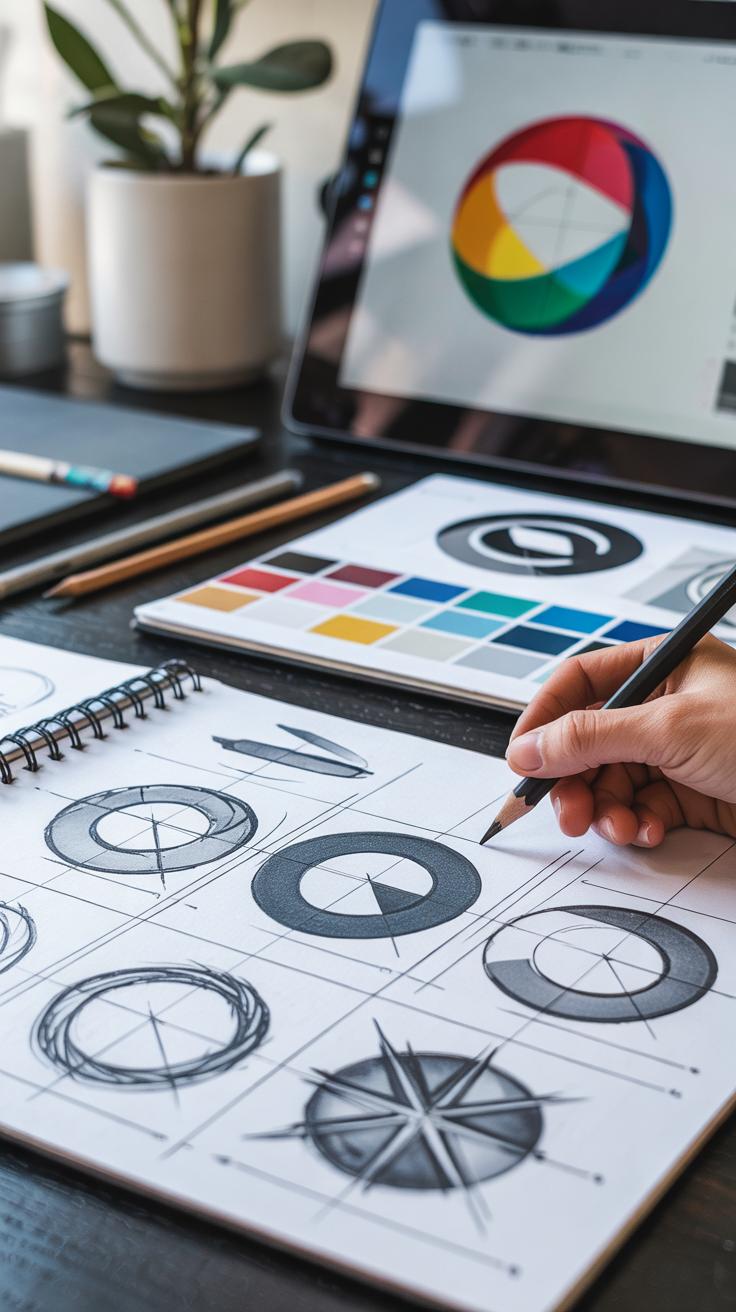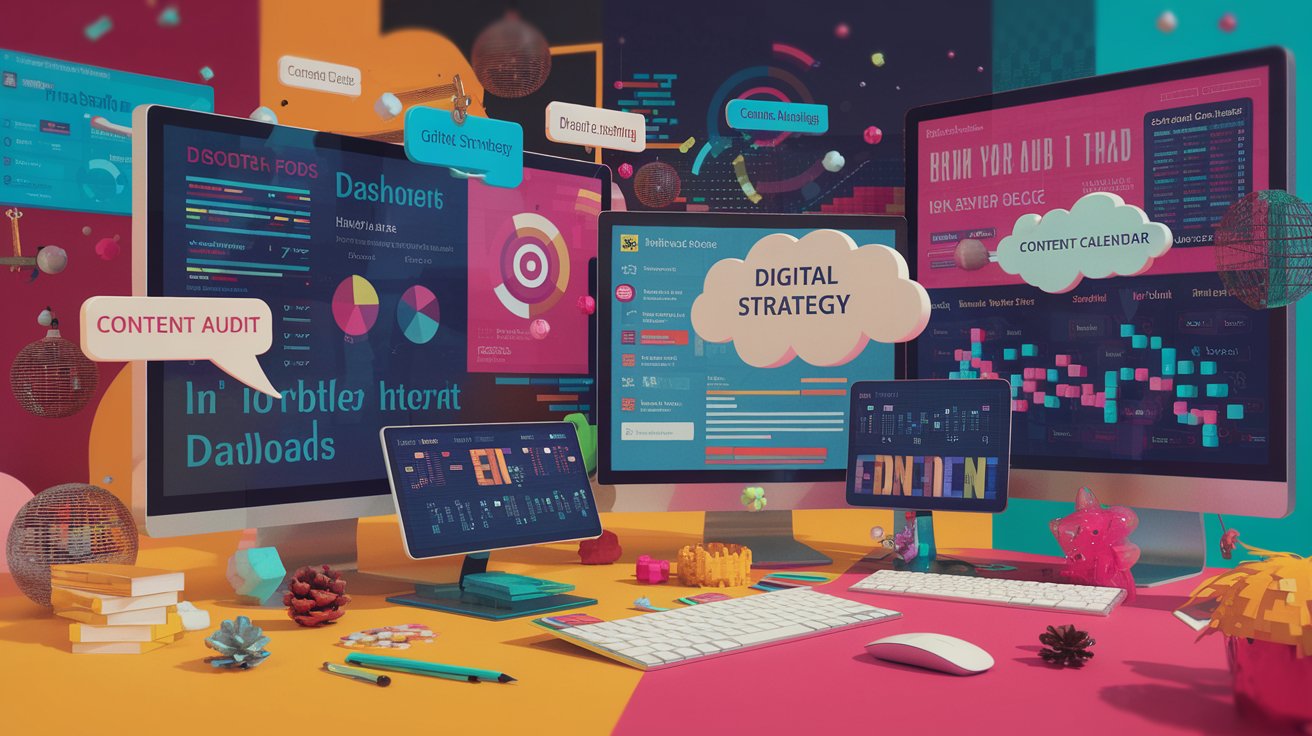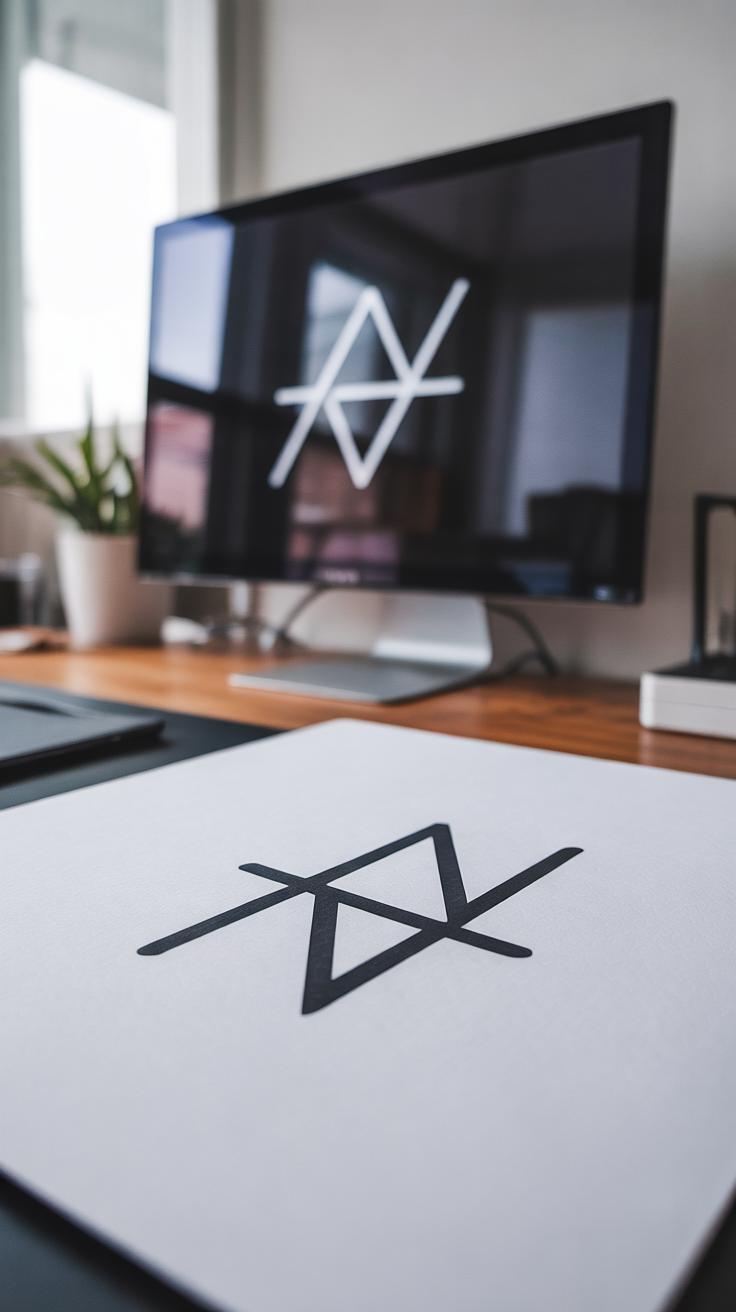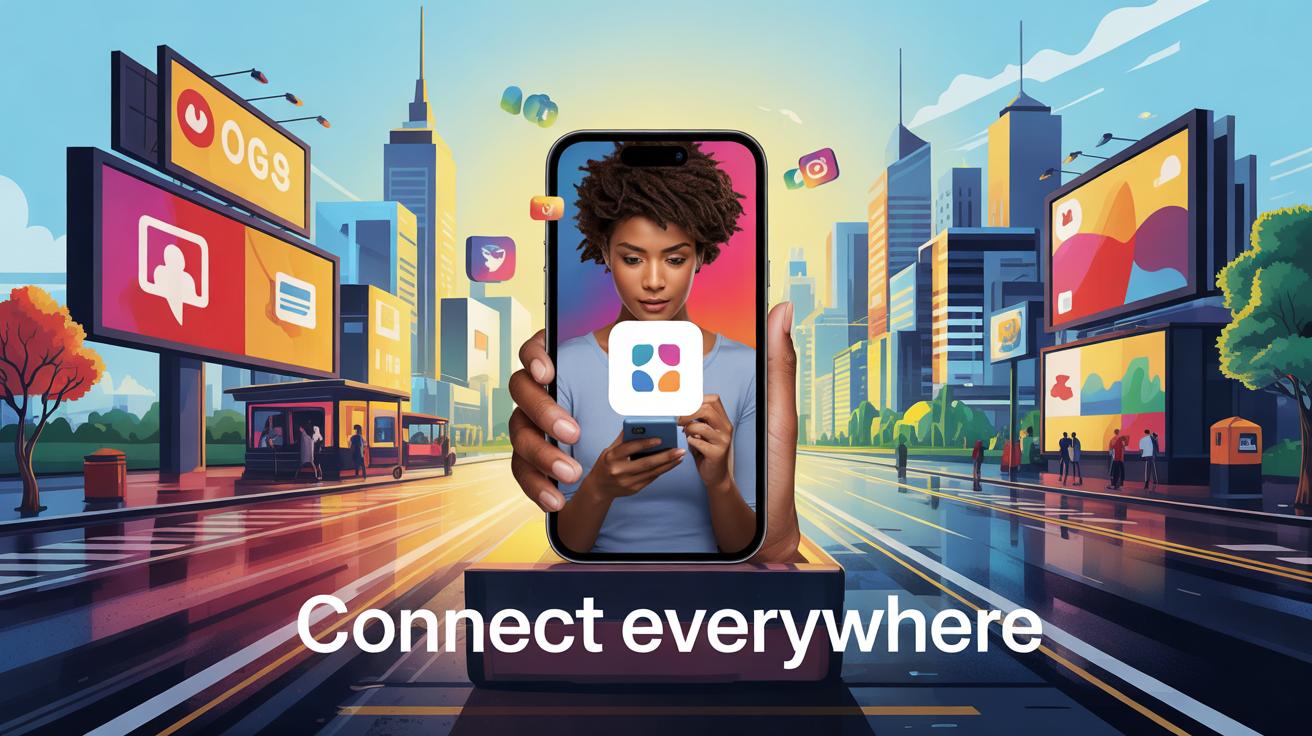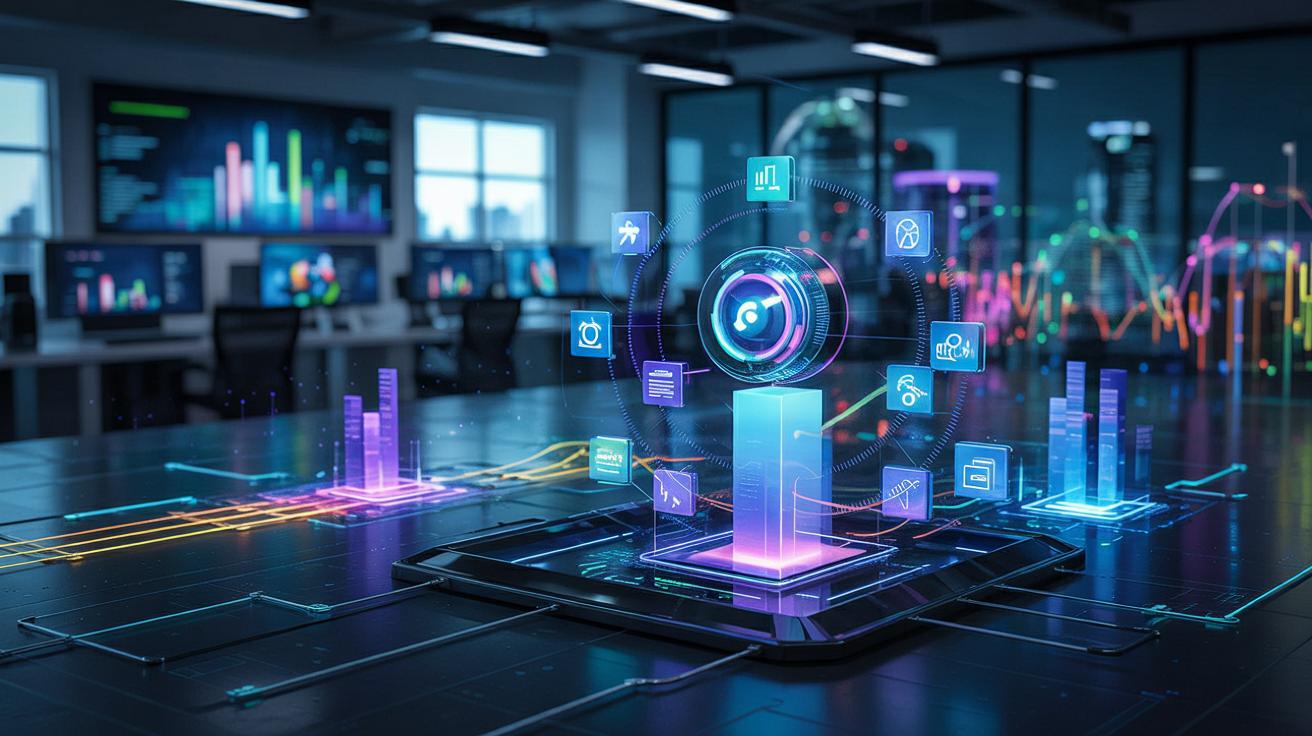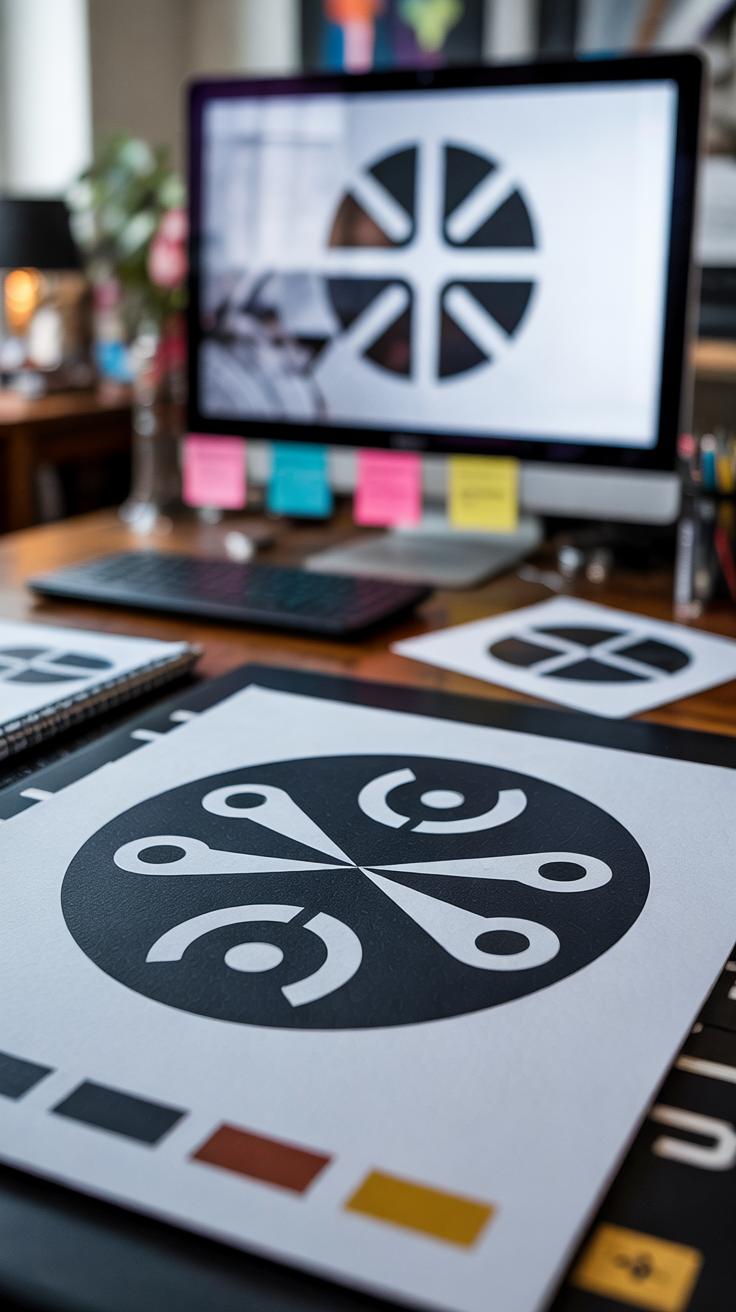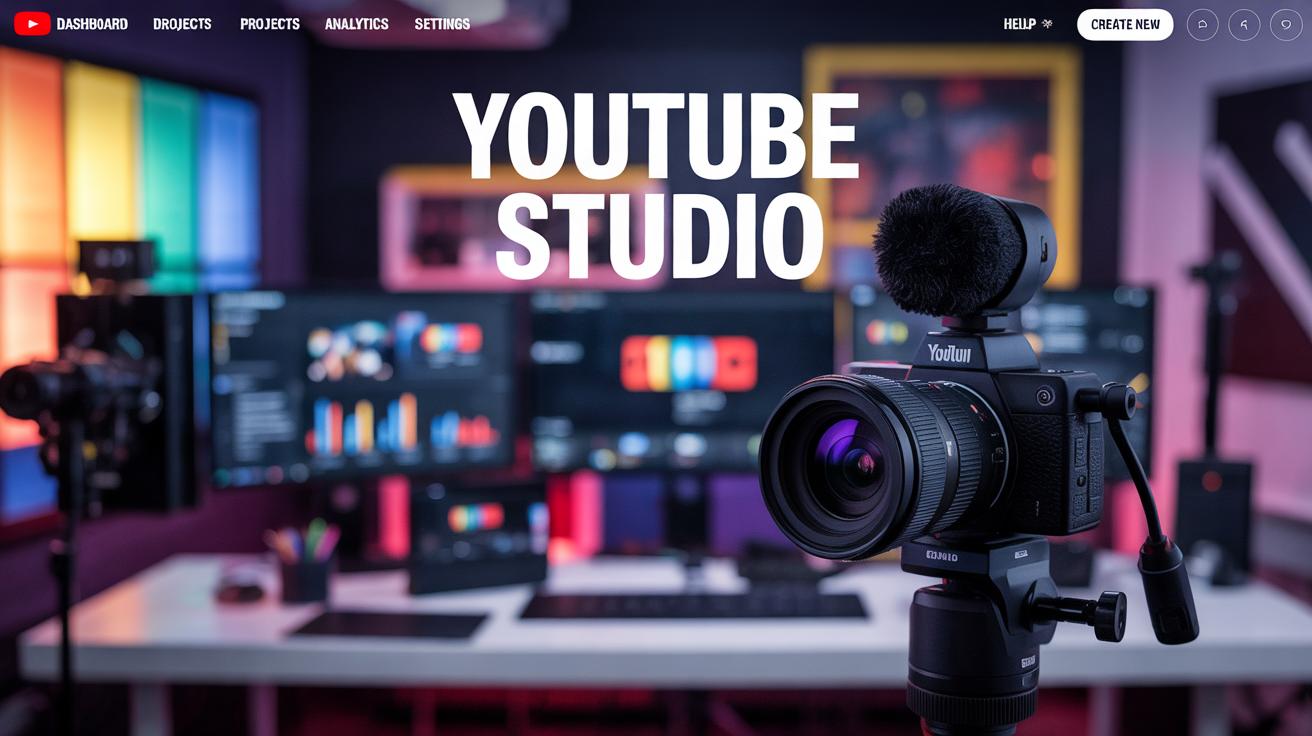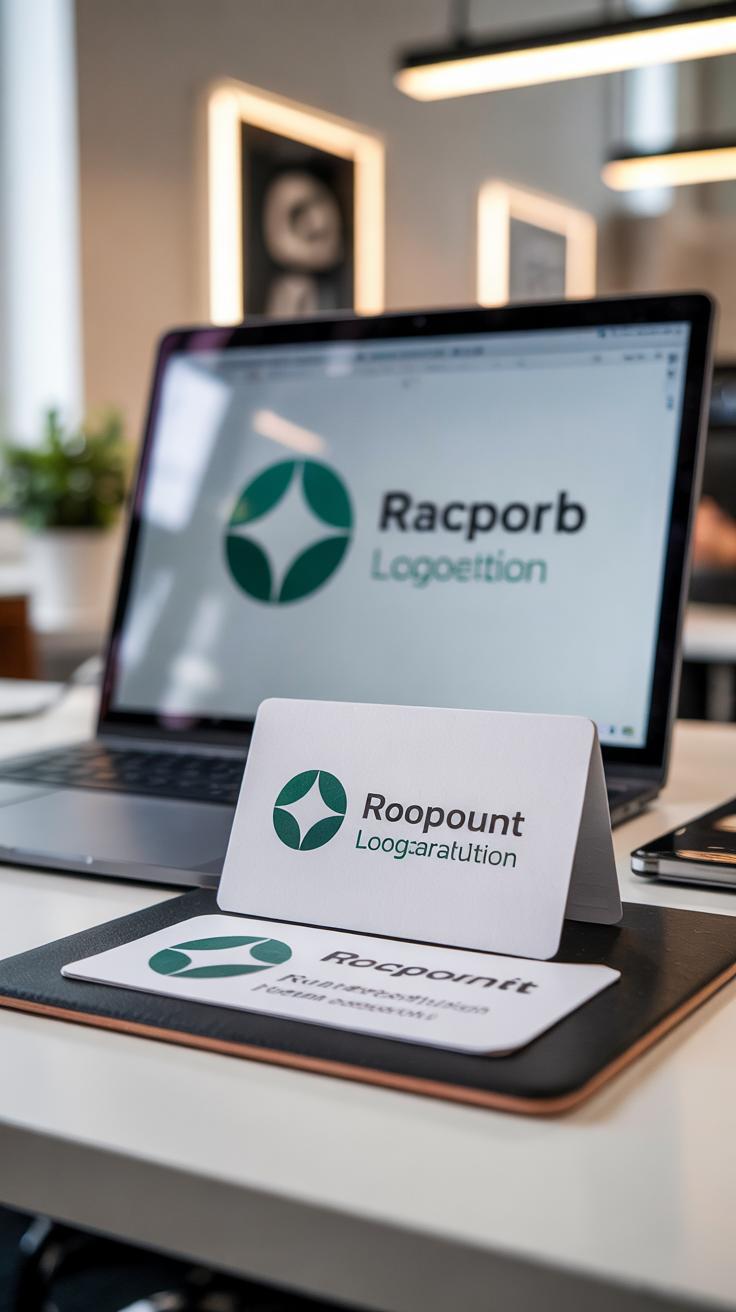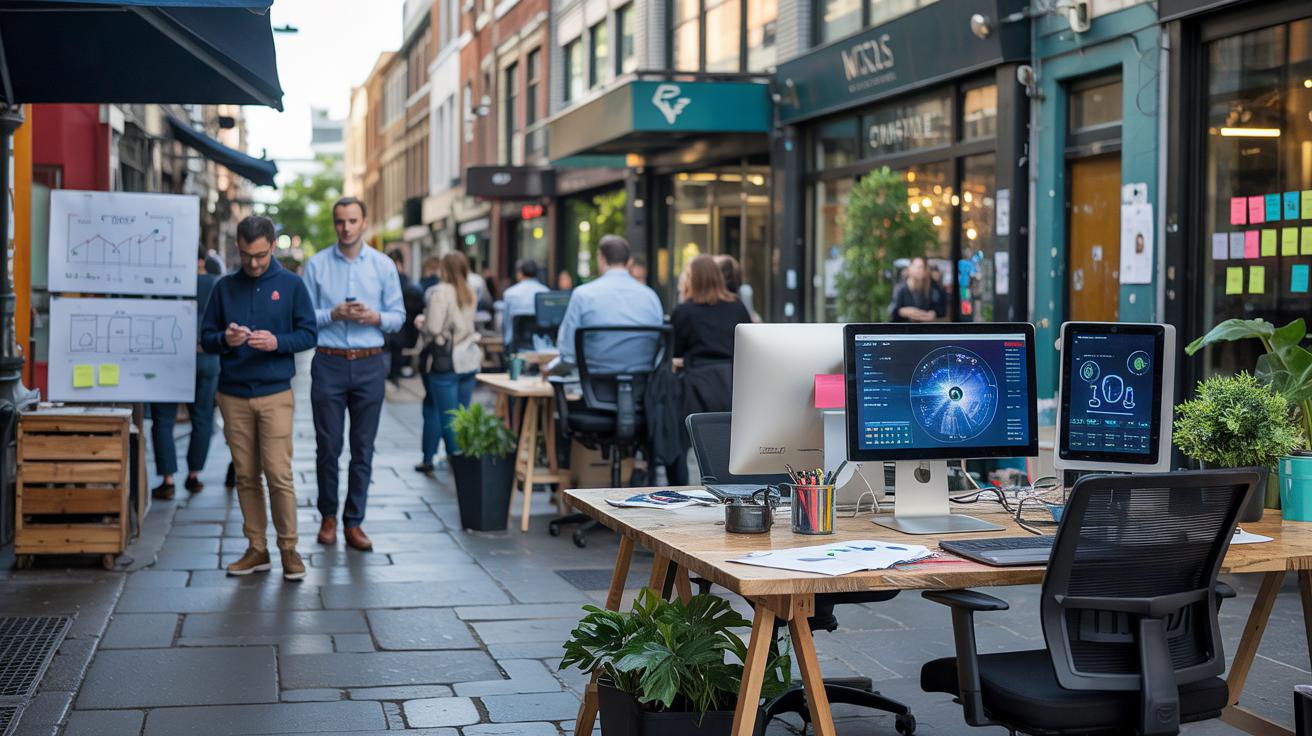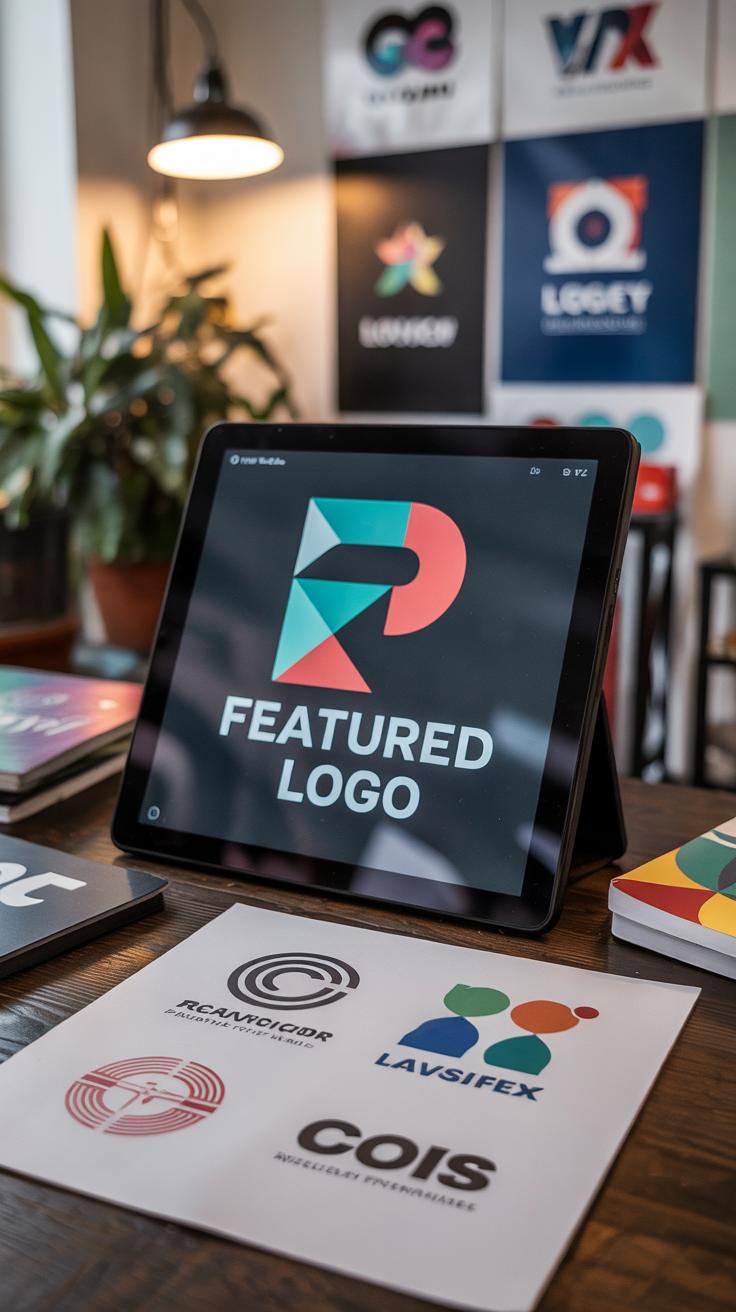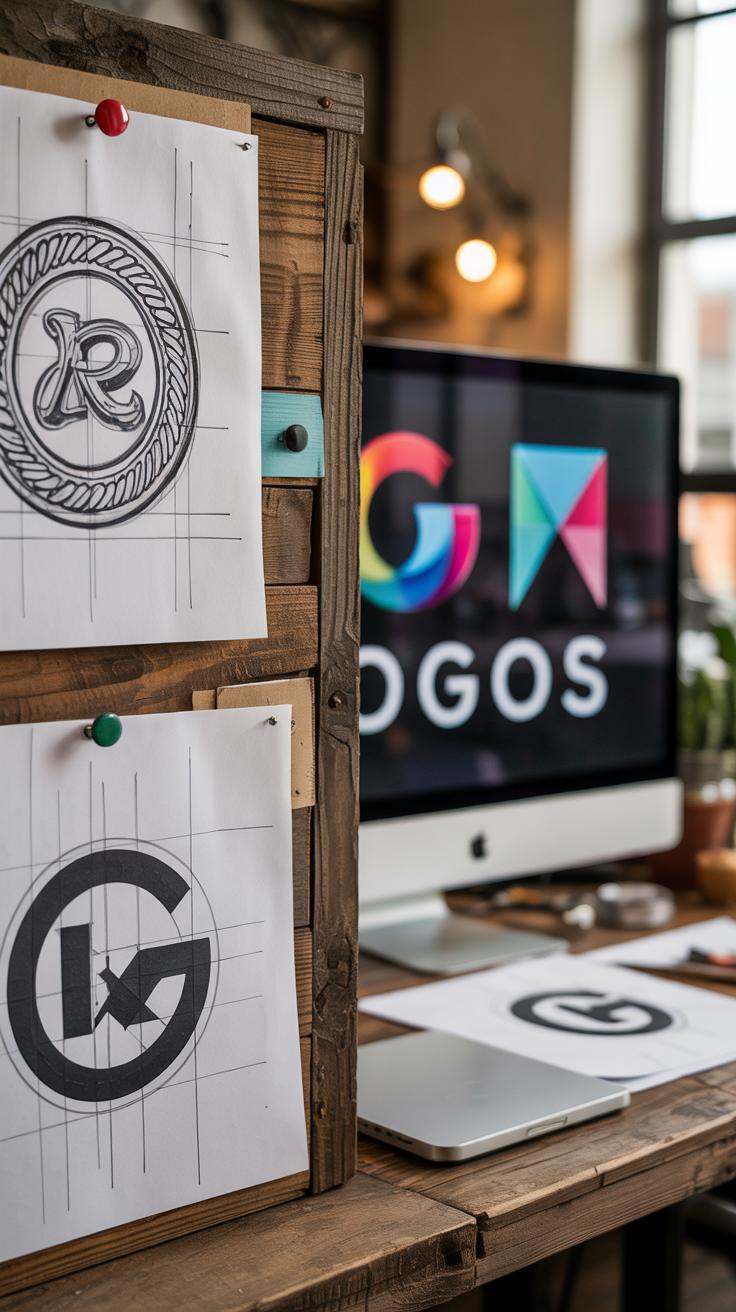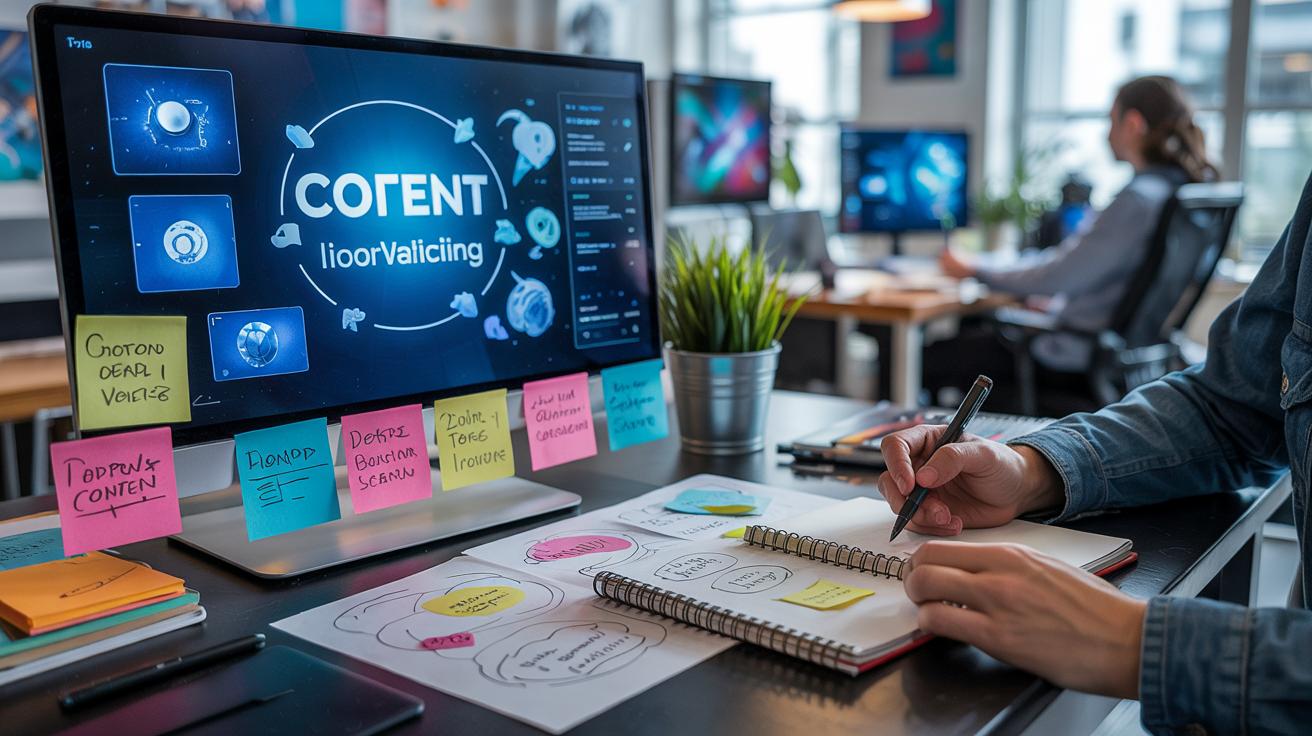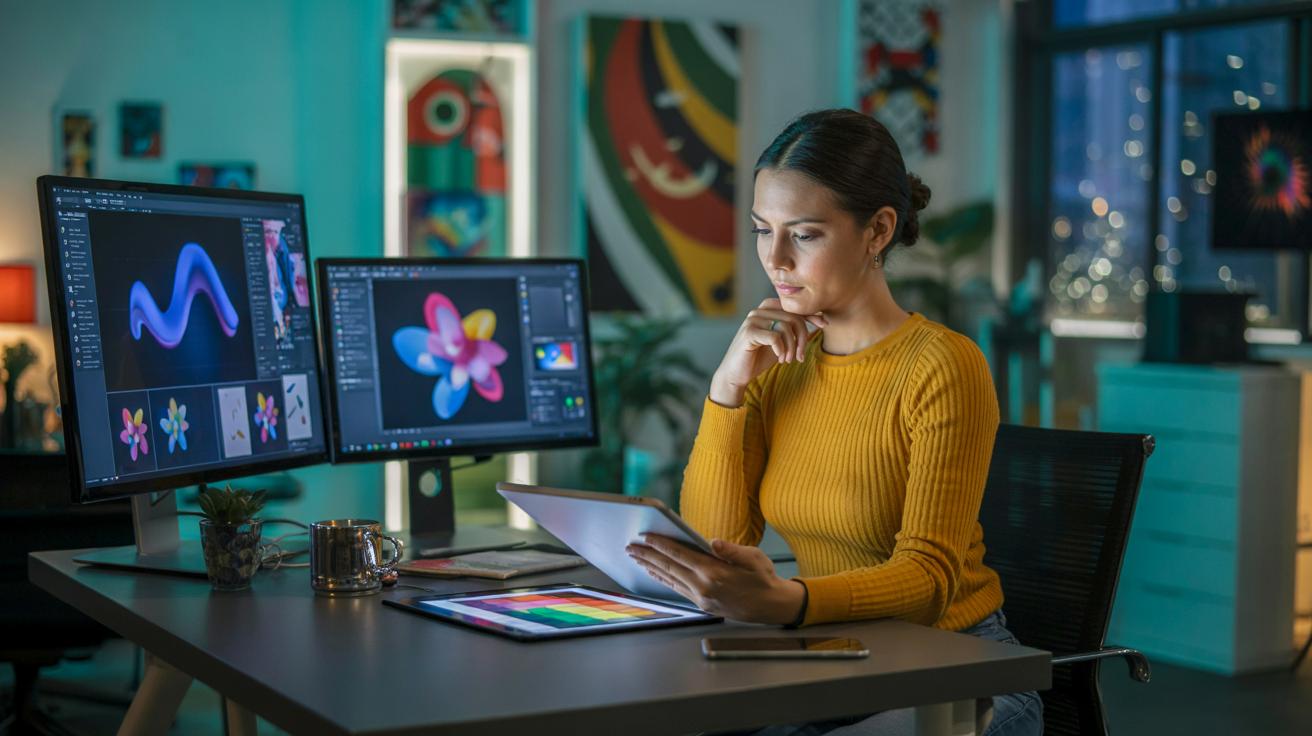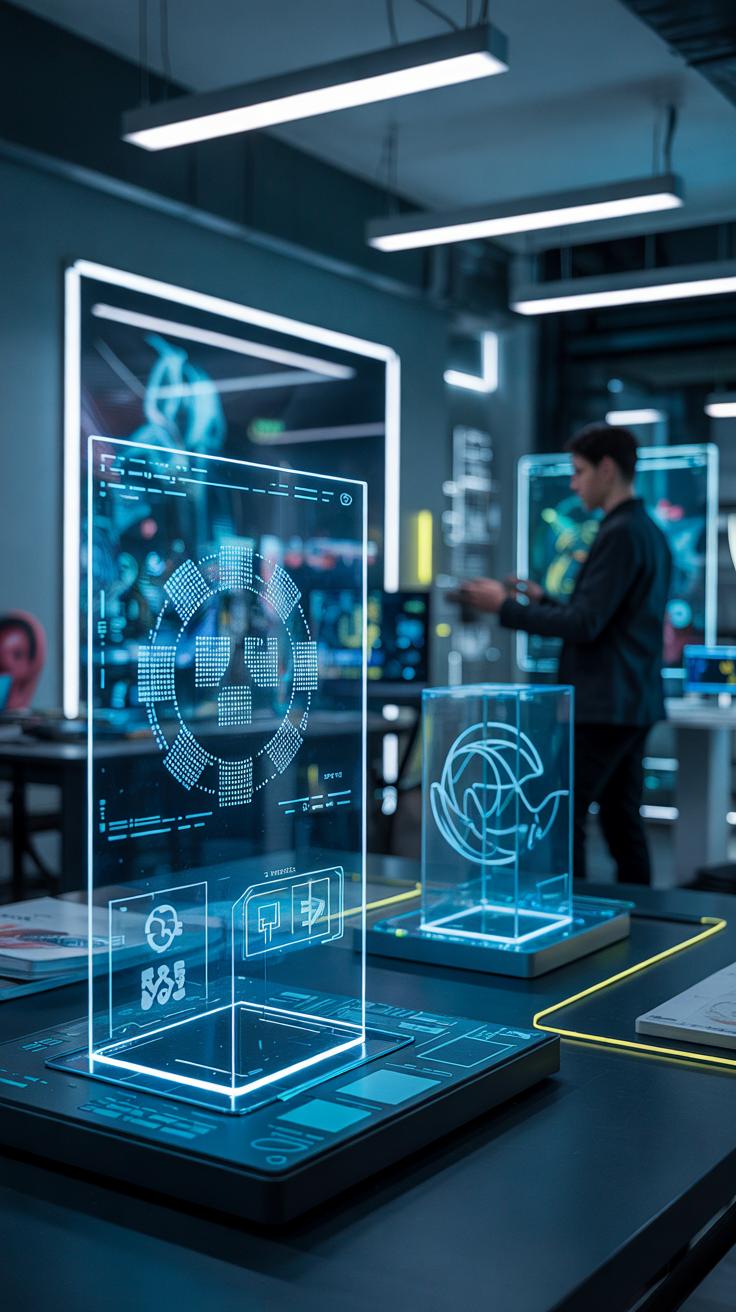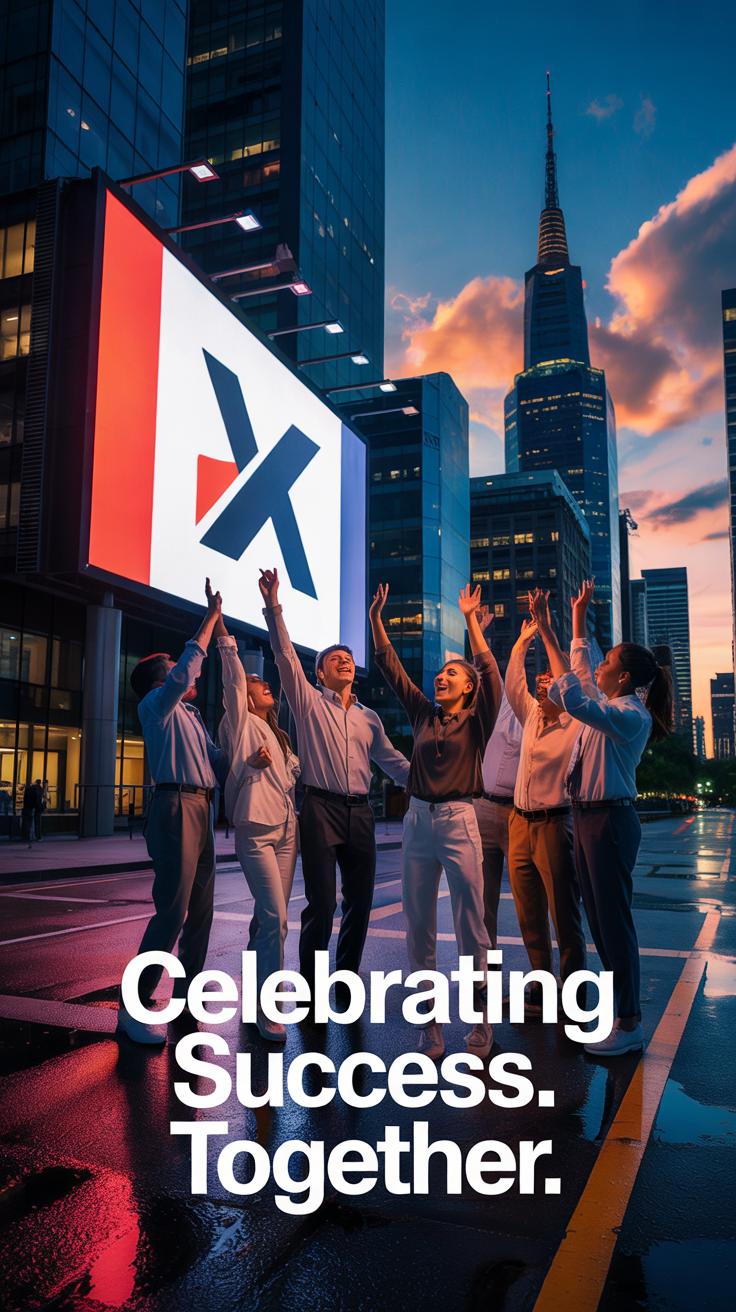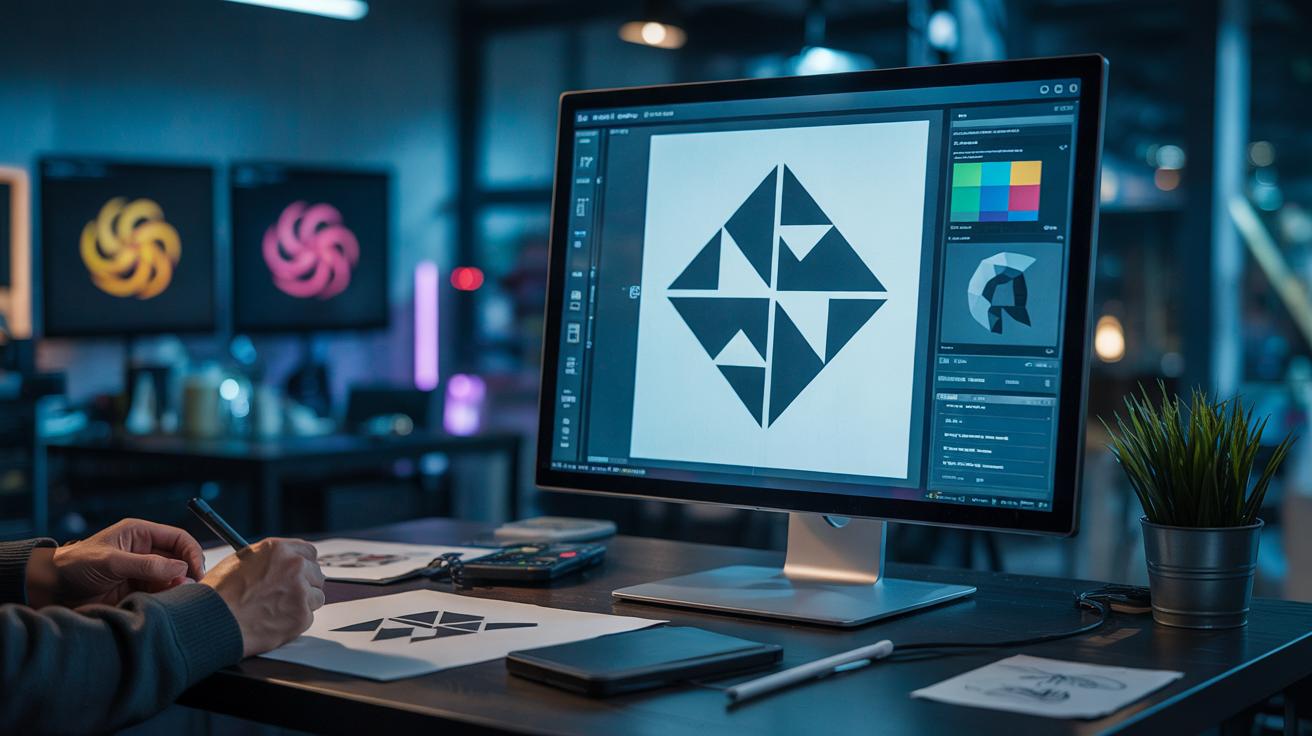
How a Creative Logo Can Elevate Your Business Identity
Introduction
In a competitive marketplace, a creative logo is not just a visual mark; it’s a powerful tool that encapsulates the essence of a business. This graphic representation is crucial for brand recognition, allowing consumers to identify and connect with a company’s values and offerings. A well-designed logo can speak volumes about the quality and ethos of a brand, setting it apart from the myriad of competitors clamoring for attention. As companies strive for greater visibility, understanding the elements that make a logo effective and memorable becomes paramount.
This article takes a look at how a cool logo can boost a business’s identity. It looks at important things like keeping it simple, using symbols, and being consistent with the brand message. Logos are like the face of a brand and they’re often the first thing potential customers see. By checking out design principles, examples of logos that really work, and some thoughts on how consumers think, we’ll dive into how logos play a big part in building a strong identity for a business.
Understanding the Anatomy of a Logo The Essential Elements of Innovative Logo Design
Shapes, Colors, and Typography: Building Blocks of a Memorable Logo
A logo’s impact on business identity begins with a deep understanding of its fundamental elements: shapes, colors, and typography. Each component plays a critical role in how a brand is perceived, influencing everything from brand recognition to consumer trust.
Shapes are the visual foundation of any logo. They convey meaning and evoke emotions that can strongly resonate with an audience. For instance, geometric shapes tend to represent stability and professionalism—ideal for banks and legal firms—while organic shapes evoke feelings of warmth and creativity, making them popular among artisanal or wellness brands. Choosing the right shape can help clarify your brand’s message and align it with your core values.
The color palette is another significant element in logo design. Colors possess psychological attributes that influence consumer behavior. For example, blue often symbolizes trust and reliability, making it a favored choice among tech companies and financial institutions. Conversely, red can evoke urgency and excitement, which is why it’s frequently found in the food and beverage industry to stimulate appetite. It’s essential to consider your target audience and market positioning when selecting colors, as they must align not just with your brand identity but also with the emotions you wish to evoke.
Typography is the final piece of the logo puzzle. The font choice not only reflects the personality of the brand but also contributes to overall legibility. A modern sans-serif font may appear clean and contemporary, ideal for startups or tech companies, while a cursive font might suggest elegance and luxury, getting attention in the fashion or beauty industries. It’s crucial to avoid overly complex fonts that might detract from clarity, especially in smaller sizes or varied formats.
A creative logo isn’t just a nice-looking design; it’s like a smart mix of shapes, colors, and fonts that tell the story of your brand. When you get a handle on these parts, businesses can make logos that grab people’s attention, build loyalty, and really make their mark in a busy market. So, every choice you make in designing a logo should show what your brand stands for and what it aims for, making sure your message hits home with consumers.
The Role of Simplicity in Logo Design
Why Simplicity is Key in Memorable Logo Creation
Simplicity is a fundamental principle in logo design that fosters memorability and effectiveness. A logo that is simple often resonates more deeply with audiences, making it easier to recall and recognize. In a world teeming with visual stimuli, a straightforward logo can stand out, cutting through the noise and establishing a direct connection with potential customers.
A simple logo strips away unnecessary elements, focusing on the core message of the brand. This clarity not only aids in recognition but also creates versatility across various platforms. When a logo is uncomplicated, it can be easily adapted for different formats, whether it is displayed on a website, printed on merchandise, or showcased in advertising campaigns. This adaptability ensures consistent brand representation, reinforcing the business identity.
When it comes to design, keeping things simple can really help people feel at home. Think about it—some of the most recognizable logos out there, like Apple, Nike, and McDonald’s, go for a minimal look. These logos are so well-known because they use simple shapes and colors. They’re not just easy to remember; their straightforward style also makes us link them with good vibes like trust and reliability.
Simplicity can really boost how people feel about a logo. When there aren’t a ton of complicated details, folks can really connect with what the logo stands for. That emotional link is super important because it can affect how loyal customers are and how they see the brand. A straightforward design gives off a vibe of professionalism, making it clear that the brand cares about being clear and consistent, which are qualities many people appreciate.
Balancing Creativity and Minimalism
While creativity is crucial in logo design, it should not come at the expense of simplicity. Striking the right balance between artistic flair and straightforwardness is essential. Logos that incorporate unique elements but retain simplicity often succeed in captivating audiences while maintaining clear brand messages. The challenge lies in making creative choices that enhance recognition without adding clutter.
Keeping logos simple isn’t just a passing trend; it’s a key part of making your brand memorable and creating a solid business identity. A good, simple logo leaves a lasting impression, helps build trust with customers, and can really play a big part in your business’s success.
Symbolism and Meaning in Logos How Creative Symbols Enhance Brand Storytelling
The use of symbolism in logo design plays a pivotal role in shaping a company’s narrative, acting not merely as an aesthetic choice but as an integral part of brand identity. A creative logo can encapsulate the essence of a business, conveying its values, mission, and unique selling points through visual language. The strategic employment of symbols allows brands to connect with their audience on a deeper emotional level, thereby enhancing recognition and recall.
One effective approach to using symbols is to craft a logo that tells a story. This can be achieved through various elements, including colors, shapes, and iconography. For instance, a tech company might use angular shapes to convey innovation and precision, while a wellness brand could opt for organic curves and earthy tones to evoke feelings of balance and health. Such choices create a visual narrative that not only distinguishes the brand within its market but also resonates with the targeted demographic.
Another factor worth considering is the cultural significance behind specific symbols. Different symbols can carry varied meanings across cultural contexts, influencing how a logo is perceived. For example, a lotus flower can symbolize purity and rebirth in some cultures, making it a fitting emblem for brands focusing on health and wellness. Understanding these cultural nuances ensures that the logo speaks authentically to its intended audience and avoids misinterpretation, further solidifying brand recognition.
Incorporating storytelling into logo design can also make the brand more relatable. When consumers understand the symbolism behind a logo, they are more likely to develop a personal connection with it. A brand that thoughtfully explains its logo’s elements—perhaps through a tagline or promotional material—can engage its audience by inviting them to share in the journey, turning passive observers into active participants in the brand’s story.
A logo that cleverly includes symbols related to what the company is all about can really get people talking and curious. This kind of buzz is super helpful in a busy market where it’s crucial to stand out. So, in this way, a cool logo isn’t just about looking good; it’s like a way to tell a story that helps build how people feel about the brand and keeps them coming back.
Consistency Across Branding Efforts The Vital Role of Uniform Logo Representation
A creative logo serves as the visual centerpiece of a business’s identity, manifesting the brand’s essence through colors, shapes, and typography. However, its real power lies not only in the design itself but also in its consistent application across various platforms. Consistency in logo representation helps consumers develop a stronger association between the logo and the brand, ultimately enhancing brand recognition.
When businesses maintain a uniform logo across all marketing materials—whether on their website, social media profiles, physical stores, or promotional items—they create a cohesive appearance that reinforces their identity. For instance, a logo that appears distinctly on a business card but differs in style when used on social media can confuse consumers. This inconsistency can dilute the brand message and provide an impression of disorganization or unreliability.
Uniformity in logo usage helps solidify brand identity. A well-known example is that of a popular global beverage company whose trademarked logo is applied consistently across all facets of its marketing. Despite varying cultural interpretations and advertising mediums, the logo retains its core elements, making it instantly recognizable no matter where it appears. Consumers do not just recognize the logo; they associate it with quality and trustworthiness because of this consistent representation.
In digital spaces, staying consistent becomes even more important. Brands connect with their audience through different channels, and each one has its own design rules. If a logo changes too much depending on where it’s used, it can confuse people. That’s why keeping a steady logo—like having a detailed version on a website and a simpler icon for an app—helps create a clear visual style that folks can trust and associate with the brand.
To achieve consistency, businesses should consider developing a comprehensive brand style guide. This guide should outline logo specifications, including appropriate colors, sizes, and backgrounds suitable for diverse applications. By adhering to these guidelines, teams can ensure that all representations of the logo meet established standards, paving the way for a unified brand presence.
Using a consistent logo really helps build your brand and keep your customers loyal. When people see the same logo in different places, it makes them feel more familiar with it. That recognition and trust are super important for any business to succeed.
Case Studies of Successful Logos How Creative Logos Enhance Business Identity
Examining Impactful Brand Logos
Numerous brands exemplify how a creative logo can significantly boost business identity. One prominent case study is Apple. The simple yet striking apple silhouette, with its clean lines and minimalistic approach, communicates innovation and modernity. This logo not only differentiates Apple from competitors but also embodies the company’s core values of simplicity and sophistication. It is easily recognizable globally, fostering strong brand loyalty and making it a timeless symbol in technology.
Another compelling example is Nike. The swoosh logo is not just an image; it represents movement, speed, and athletic prowess. This creative design resonates with the brand’s mission to inspire and motivate athletes at every level. Over the years, the swoosh has been consistently integrated into advertising campaigns and merchandise. Its versatility allows it to be used effectively in diverse settings, reinforcing the brand’s identity as a leader in sportswear. The logo’s simplicity makes it memorable, enabling quick recognition even without the accompanying brand name.
Starbucks offers another illustration of effective logo utilization. The green mermaid has evolved over the years, transitioning from detailed illustrations to a more simplified version. This rebranding reflects not just a modernization of the logo but also a shift in focus towards the customer experience. The iconic siren serves to create a relaxing, inviting atmosphere synonymous with Starbucks, enhancing its identity as a global coffeehouse leader. The logo’s steadfast presence communicates quality and comfort, encouraging strong emotional connections with customers.
Creative Logo Design in Action
Beyond individual brands, the impact of creative logos can also be observed across various industries. For instance, FedEx’s logo incorporates a hidden arrow within its lettering design. This subtle element symbolizes speed and precision, aligning with the brand’s promise of reliable delivery services. The clever integration of meaning into the design philosophy illustrates how innovative logos can convey messages effortlessly, creating a lasting impression on consumers.
Similarly, the World Wildlife Fund (WWF) showcases how creative logo design can evoke emotional responses. The black and white panda not only stands out visually but also represents the organization’s mission to protect endangered species. The simplicity of the panda’s outline makes it easily recognizable, reinforcing WWF’s commitment to conservation efforts globally. This example demonstrates that an impactful logo can serve as a rallying point for social causes, aligning business identity with important values.
The Evolution of Logo Design in the Digital Age
Digital Trends Shaping Modern Logo Design
The landscape of logo design has undergone a remarkable transformation in the digital age, driven by emerging digital trends that influence how brands visually communicate their identities. In an era dominated by social media and global connectivity, the expectation for logos is not only for them to be distinctive but also versatile and memorable across various platforms.
One prominent trend is the move towards minimalism. As screens get smaller and the demand for clear communication heightsens, brands are opting for simpler logos that convey their message effectively without clutter. Minimalist logos, characterized by clean lines and uncomplicated shapes, are not only aesthetically pleasing but also more adaptable for diverse digital applications, from website headers to mobile app icons.
Color also plays a pivotal role in the evolution of logo design. The digital sphere has seen an increase in vibrant color palettes, appealing to younger audiences and enhancing brand visibility. Bold colors can evoke emotions, create curiosity, and enhance recognition. Gradient techniques are also making a comeback, adding depth and dimension, thereby creating more visually engaging logos that resonate on digital platforms.
Another significant development is the incorporation of animated logos. With advancements in technology, brands can utilize motion graphics to create dynamic logos that capture attention more effectively than static images. These animated logos can tell a story, add personality, and encourage engagement, making them particularly effective on digital platforms where consumers increasingly crave content that is not just functional but also entertaining.
Responsive design is yet another aspect influencing logo evolution. A logo needs to maintain its integrity and clarity across various devices and screen sizes. This has led to the adoption of more flexible designs that can easily adapt to multiple formats. Brands are developing logos that can respond dynamically to different contexts, such as changing colors or elements based on user interaction, which enhances user experience and brand engagement.
When it comes to logo design today, it’s not just about looking good. It’s actually about making something that works well and can grow with a brand while also providing an engaging experience to help businesses shine in a crowded market. As we move on to what’s next, let’s dive into the future of logo design and think about the trends and tech that could really influence this important part of a brand’s identity.
The Future of Logo Design Emerging Trends and Technologies
Innovative Directions in Logo Creation
The landscape of logo design is continually shaped by advancements in technology and evolving consumer expectations. As businesses strive for recognition in a crowded marketplace, the need for creativity in logo design becomes paramount. One emerging trend is the use of **augmented reality (AR)** to create interactive logos. This technology allows consumers to engage with brands in dynamic ways, providing an immersive experience that traditional logos cannot offer. Imagine scanning a logo with a smartphone to see a 3D animation or video that tells a brand’s story. This fusion of static and digital elements could redefine how logos communicate brand identity.
Another anticipated shift is the move towards **minimalism**. While this trend is not new, its future iterations will focus on balance and clarity, pairing bold colors with simple geometric shapes. Brands may lean towards versatile logos that can easily adapt across multiple platforms, whether it’s a business card, website, or social media profile. This adaptability will ensure logos maintain their clarity in different formats, fostering a more coherent brand identity as visual storytelling becomes integral in marketing strategies.
Personalization and Data-Driven Design
Personalization is another factor expected to transform logo design. As data analytics tools become increasingly sophisticated, businesses will harness consumer insights to create logos that resonate deeply with target audiences. This data-driven approach allows companies to experiment with various designs and color schemes that align with their customers’ preferences, ultimately enhancing brand recognition. Furthermore, logos that reflect cultural significance or local aesthetics can enhance connection and relatability, driving consumer loyalty.
Technological advancements like **artificial intelligence (AI)** are also making their mark on logo design. AI tools can offer real-time feedback and generate multiple logo variations based on specific input criteria. This shift could streamline the design process, allowing designers to focus more on creativity while minimizing time-consuming tasks. The collaboration between human creativity and machine efficiency promises to elevate the quality of logo design, ensuring brands can adapt swiftly to changing market trends.
As we look towards the future, the evolution of logo design remains at the intersection of technology and artistry. Creative logo designs that merge the physical and digital realms, embrace personalization, and utilize cutting-edge technology will be instrumental in establishing robust business identities in an increasingly competitive environment.
Conclusion The Lasting Impact of a Creative Logo on Business Identity
In the competitive landscape of business, the significance of a creative logo cannot be overstated. A well-designed logo serves as the cornerstone of a company’s visual identity. It encapsulates the essence of a brand, effectively communicating its values, mission, and vision in a single glance. Through innovative design elements, a logo can evoke emotions, spark recognition, and form connections that resonate deeply with consumers.
The insights derived from examining the role of creative logos highlight their power in fostering brand recognition. In a marketplace teeming with options, a distinctive logo helps a business stand out. It acts as a memorable visual trigger that can lead to consumer recall, making it easier for potential customers to associate quality and reliability with the brand. A unique emblem or graphical representation can be instantly recognized, enhancing the likelihood of repeat business and customer loyalty.
Creative logo goes beyond mere aesthetics; it tells a story that reflects the brand’s unique personality. Through color psychology, typography, and visual elements, logos can capture the essence of a company’s ethos. For instance, a vibrant color palette might evoke feelings of excitement and energy, ideal for an entertainment company, while muted tones may suggest elegance and sophistication for a luxury brand. Thus, the nuances embedded in creative logo design are pivotal in shaping consumer perceptions and expectations.
A logo’s flexibility is super important for how well it works. As companies grow and change, a logo needs to fit into different settings like websites, printed materials, products, or signs. A clever logo that keeps its look no matter where it’s seen helps create a strong brand identity and makes it easier for people to recognize it everywhere they come across it.
A creative logo can really make a lasting impression and its importance shouldn’t be overlooked. It’s not just some pretty picture; it’s a key part of how a company is seen and how customers react to it. Businesses that focus on unique logo design often get ahead because a good logo builds trust and connects with people. This connection helps create lasting relationships with their audience which is super important for success in today’s market where brands really stand out.
Conclusions
A great logo is more than just a pretty picture for any business. It’s like a badge that shows what the brand stands for influences how people see it and helps them remember it even when there are a ton of other options out there. When we looked into what makes logos work well we found that keeping things simple using symbols and being consistent is super important. All these pieces come together to form a brand identity that sticks in people’s minds. Just think of successful brands and how their logos have built strong emotional ties with their customers.
Looking forward, the evolution of logo design continues to progress as new technologies and trends emerge. Businesses must remain attentive to these changes, ensuring their logos not only resonate with current audiences but also endure through time. Investing in a creative logo is more than just a graphic choice; it is a strategic decision that defines a brand’s legacy and success in the years to come.

